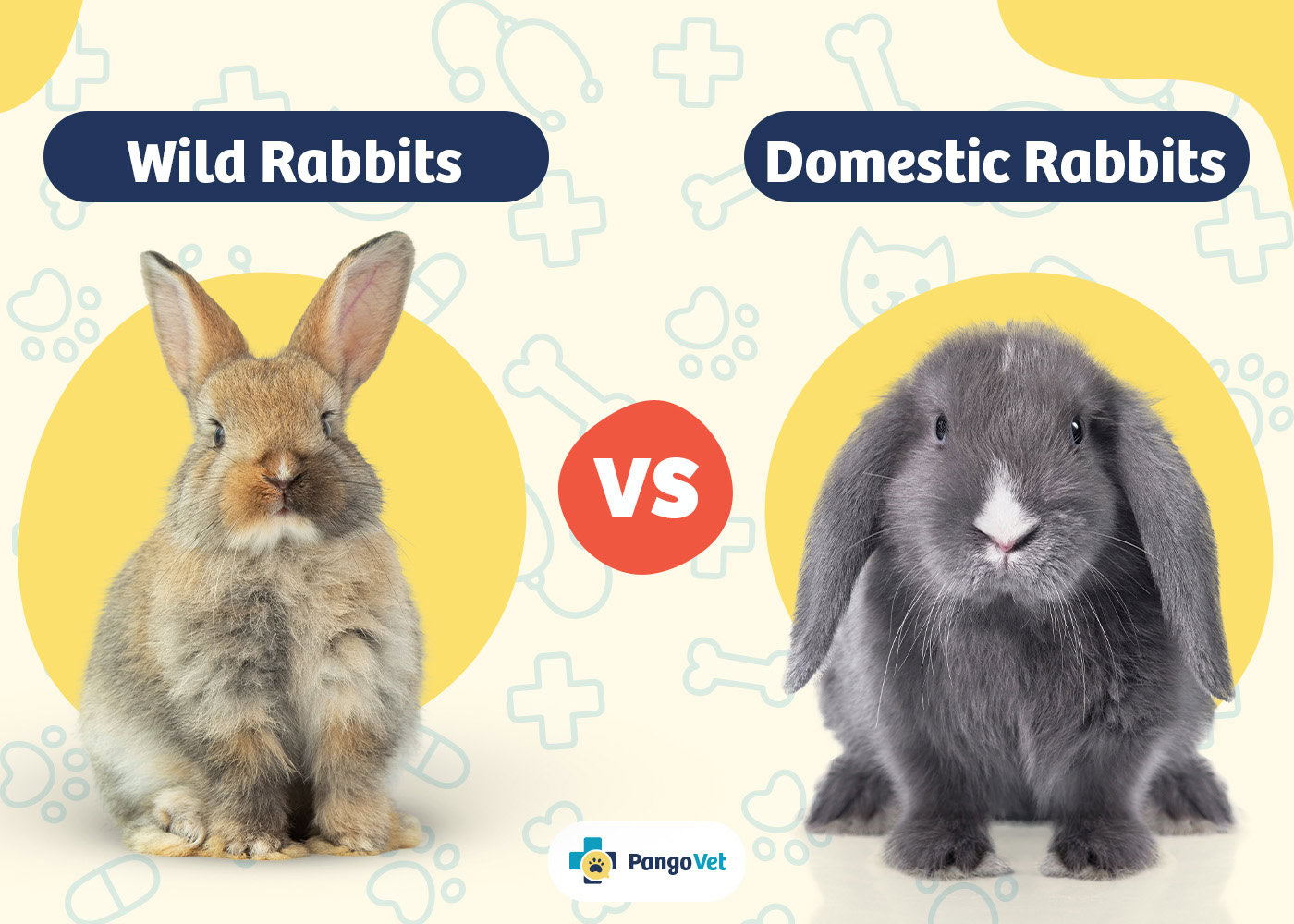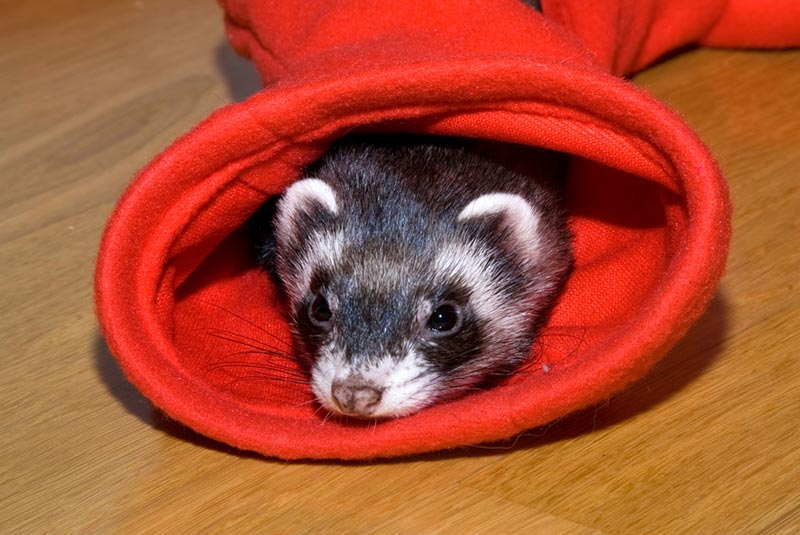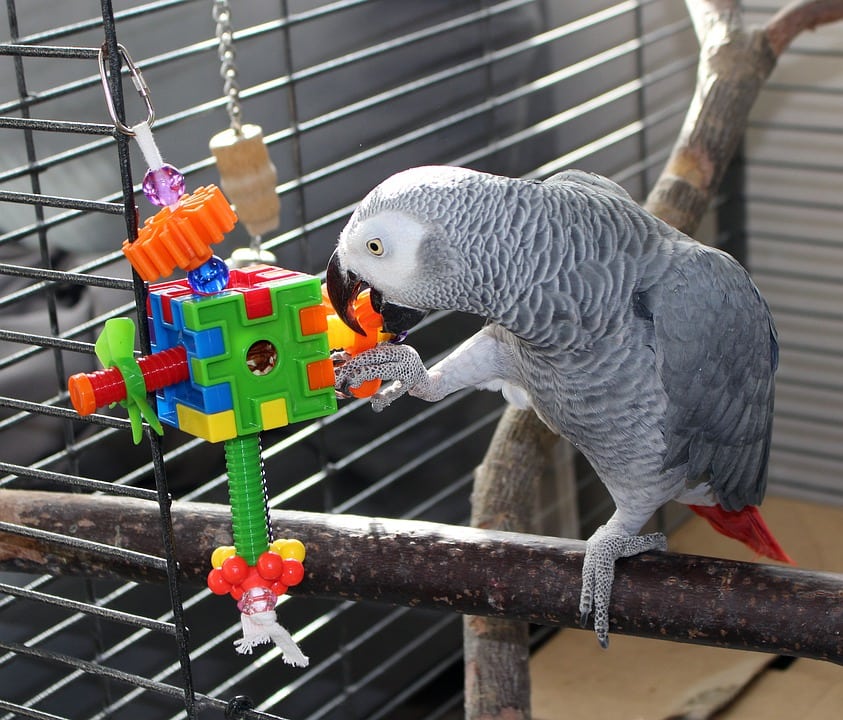Click to Skip Ahead
We’ve all seen rabbits in the backyard, the woods, and the park. We’ve also seen rabbits in people’s houses, pet stores, and hutches in their backyards. However, is the wild rabbit in the backyard capable of becoming a pet, or should you stick to the domestic rabbit you can pick up at any pet store? In fact, how do you tell the difference between wild and domestic rabbits? In this article, we’ll explain the differences and discuss their characteristics, appearance, and habitats.

Visual Differences
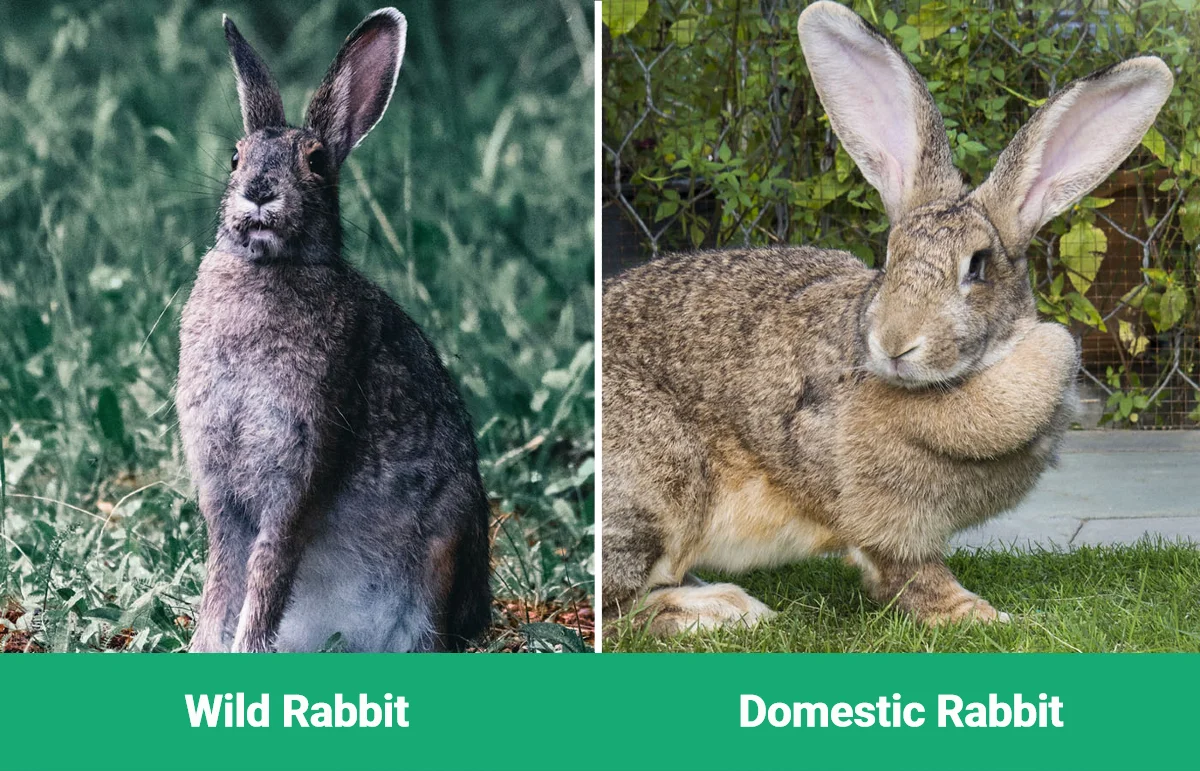
At a Glance
- Origin: European
- Size: 1–5 pounds
- Lifespan: 1–5 years
- Domesticated?: No
- Origin: Southern France
- Size: Around 6 pounds
- Lifespan: Up to 12 years
- Domesticated?: Yes
Wild Rabbit Breed Overview
Wild rabbits are small animals that live in nearly every part of the world, including Europe, where they originated. How do you tell the difference between a wild rabbit you see in your backyard on a spring morning and the pet rabbit your neighbor keeps in a hutch? We’ll talk about the characteristics, appearance, and habitat of the wild rabbit below.

Characteristics & Appearance
Wild rabbits usually have greyish-brown fur and a white flash that can be seen on the underside of their tail. They typically weigh between 1 and 5 pounds and live for around 1 to 5 years. They can also grow up to 20 inches pmg. However, since rabbits live in the wild, sometimes they don’t even make it a year due to predators and inclement weather.
Their bodies have evolved to escape predators more effectively, and their large, straight ears allow them to keep track of threats, while their muscular hind legs help them quickly escape.
Habitat
Wild rabbits live in grassland habitats, fields, woodlands, and suburban backyards. Some live in warrens under the ground, while others live above ground. The Pygmy rabbit is native to the United States and burrows deep underground to set up a warren, but the Cottontail rabbit is one of the only species that does not burrow underground to build its home. Instead, it makes a home hidden by vegetation in thickets or an area excavated by another burrowing animal, such as a woodchuck.

Domestic Rabbit Breed Overview
While not too different from the wild rabbit, the domestic rabbit certainly makes a better pet. Wild rabbits will bite and claw you if cornered, whereas domestic rabbits probably won’t.
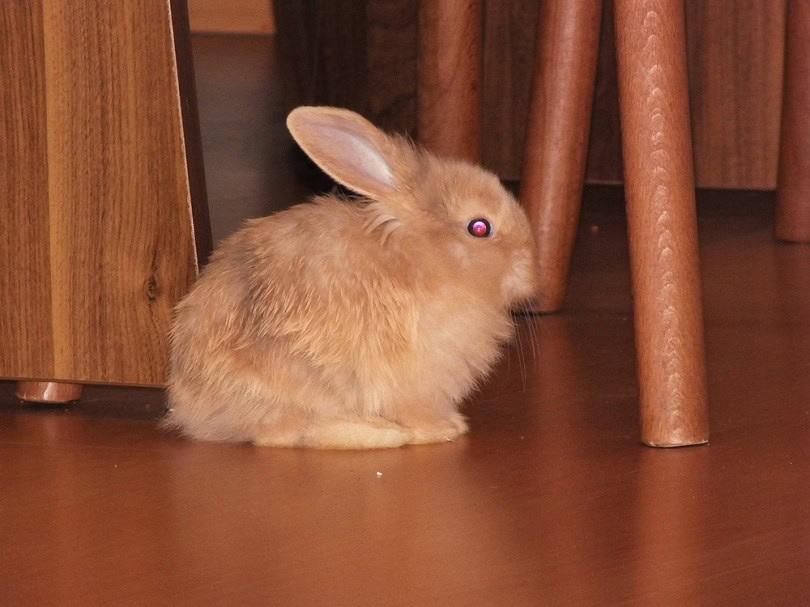
Characteristics & Appearance
Domestic bunnies vary in size and appearance, and they are bred worldwide. They are usually quite a bit larger than wild rabbits because they don’t have to forage for food and are taken care of by humans. They are also more stationary, living in hutches and enclosures. If you’re interested in adopting a massive bunny, you can get a Flemish Giant, which can weigh up to 22 pounds.
Unlike wild rabbits, domestic rabbits can have floppy ears that hang down the sides of their head. Although most domesticated breeds have straight ears, you can adopt a French Lop, Holland Lop, or English Lop with ears that hang down.
Habitat
Domestic rabbits live in a variety of habitats. People keep them in enclosures, hutches, and some let them run around their homes. You can keep your domestic rabbit outside, as long as they are safe from predators and it’s not too cold or hot, as they can’t handle extreme temperatures.
You should also ensure that the enclosure you keep your rabbit in is secure from predators that might try to break in and harm your little furry friend. Hutches with durable walls and secure doors with locks are ideal, but it’s also important to elevate the cage off the ground to reduce the chances of a snake or other small animal terrorizing your pet.

What Are the Differences Between Wild & Domestic Rabbits?
There are very few differences between the wild and domestic rabbit breeds. The wild rabbit is thinner, leaner, and faster because it doesn’t get as much to eat and has to have the strength and speed to outrun predators.
On the other hand, domestic rabbits don’t know anything about living in the wild and wouldn’t make it very long if they were to get out of their enclosure and become lost. They’re not accustomed to escaping from predators or foraging for food. Pet rabbits are also heavier and less agile since they’re used to being spoiled by their owners.
However, most pet rabbits are calm and friendly to their owners and are unlikely to scratch or bite them if they’re cared for properly. Wild rabbits are terrified of humans, like every animal larger than them, and will bite them if they cannot escape.

Which Breed Is Right for You?
It’s clear that the domestic rabbit is the best choice for a pet. Wild rabbits are descended from generations of rabbits that run from predators, and that’s certainly what a wild bunny will think you are. Wild rabbits can scratch or bite people if they’re cornered, and they usually carry parasites like fleas and ticks. If you’re looking for a rabbit as a pet, it’s best to visit your local pet store or a reputable breeder.
See also:
- Can Rabbits Eat Carrots? Nutrition Facts & FAQ
- Lilac Rabbit: Facts, Lifespan, Behavior & Care Guide (with Pictures)
Featured Image Credit: (T) Trac Vu, Unsplash | (B) Best dog photo, Shutterstock
